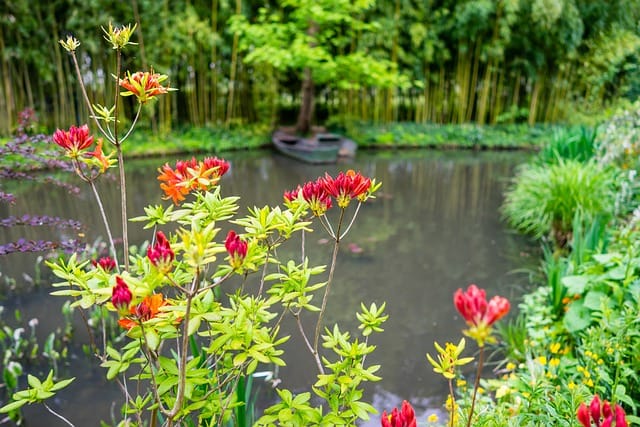Greatest gardens: Claude Monet's Garden, Giverny, France
Have you ever wanted to walk in the footsteps of one of the most influential artists in history? Claude Monet's Garden in Giverny, France offers you just that opportunity

In this article:
Introduction
Have you ever wanted to walk in the footsteps of one of the most influential artists in history? Claude Monet's Garden in Giverny, France offers you just that opportunity. This article aims to dive into the history, design, and significance of this iconic garden, as well as provide tips for visiting and maintaining it.
History of Claude Monet's Garden
Claude Monet, the renowned French painter, moved to Giverny in 1883 and fell in love with the scenic beauty of the area. Inspired by the Japanese gardens he had seen during his travels, he decided to create his own masterpiece garden. Monet meticulously designed and cultivated his garden until his death in 1926.
Location and Setting
Giverny is a small village located in the Normandy region of France. Situated about 50 miles northwest of Paris, it offers a peaceful countryside setting with picturesque surroundings. Monet's Garden is nestled within this idyllic setting, bringing together both natural and artistic elements.
Design and Layout
The design of Monet's Garden demonstrates his understanding and appreciation of art and nature. The garden is divided into two main sections: the water garden and the flower garden. Each section has its own unique charm and purpose, contributing to the overall harmonious composition.
The Water Garden
The water garden is the centerpiece of Monet's creation. With its famous water lilies, Japanese bridge, and weeping willows, it exemplifies tranquility and serenity. Monet carefully chose and arranged the plants and flowers to create reflections that fascinated and inspired him in his paintings.
The Japanese Bridge
A significant feature of the water garden is the iconic Japanese bridge. Inspired by his collection of Japanese woodblock prints, Monet added this bridge as a bridge between cultures and aesthetics. It serves as both a functional and artistic element, enhancing the overall beauty and uniqueness of the garden.
The Flower Garden
The flower garden showcases a riot of colors, textures, and fragrances. Monet meticulously selected flowers that would bloom successively to maintain a continuous display throughout the seasons. This garden is a testament to his love for color and nature's ever-changing beauty.
Monet's Studio
Situated near the flower garden, Monet's studio offers a glimpse into the artist's creative space. Preserved with the original furnishings and belongings, it provides insight into Monet's daily life and artistic process. Visitors can admire the studio and imagine the masterpieces that were conceived within its walls.
Significance and Influence
Claude Monet's Garden holds immense cultural and historical significance as an embodiment of the Impressionist movement. It served as both a source of inspiration for Monet's famous paintings and a sanctuary for him to connect with nature. Monet's unique approach to gardening and his ability to capture the essence of light and color in his artwork continue to influence artists and gardeners to this day.
Maintenance and Restoration
Maintaining and preserving Monet's Garden is crucial to its continued splendor. The garden underwent extensive restoration in the 1980s, meticulously researched to ensure its authenticity. Dedicated gardeners continue to maintain the garden, upholding Monet's vision and ensuring future generations can experience its beauty.
Visiting Claude Monet's Garden
Visiting Claude Monet's Garden is an unforgettable experience for art and nature enthusiasts alike. It is open to the public from spring until autumn, allowing visitors to witness the ever-changing beauty of each season. Booking tickets in advance is recommended, as the garden attracts a considerable number of visitors.
Conclusion
Claude Monet's Garden in Giverny, France is a testament to the power of art and nature. It is a place where one can step into the artist's world, admiring the vibrant blooms, serene water features, and enchanting bridges. By understanding the history, design, and significance of this garden, visitors can appreciate the profound influence it has had on the world of art and gardening.
